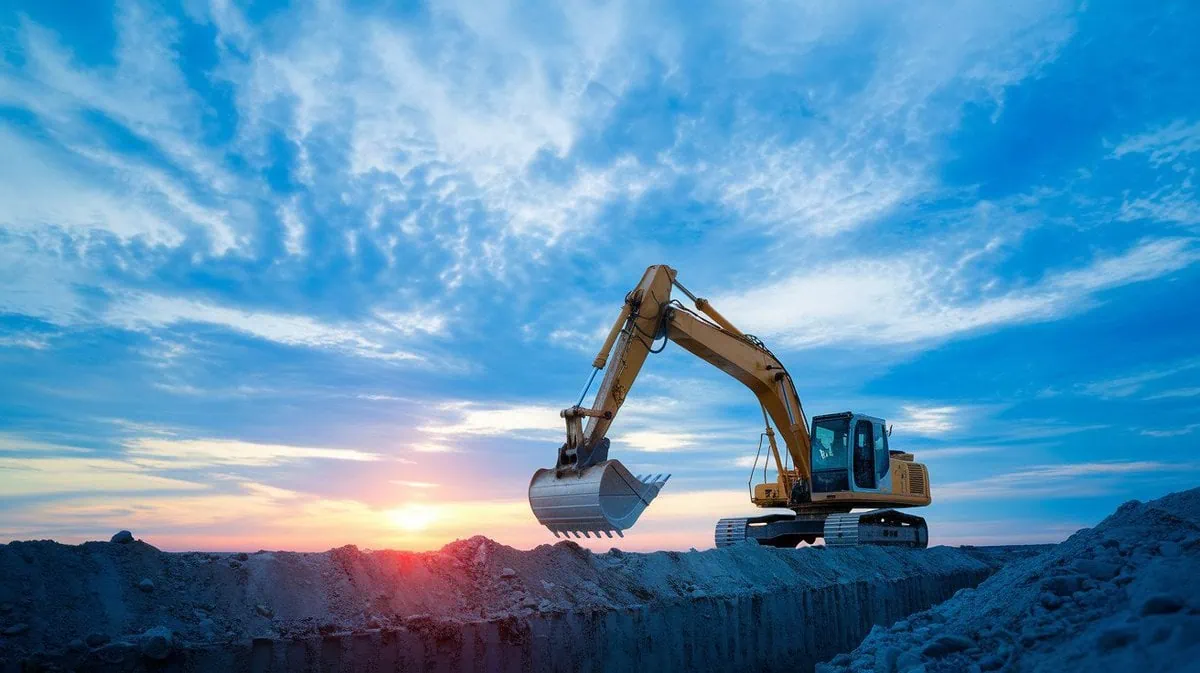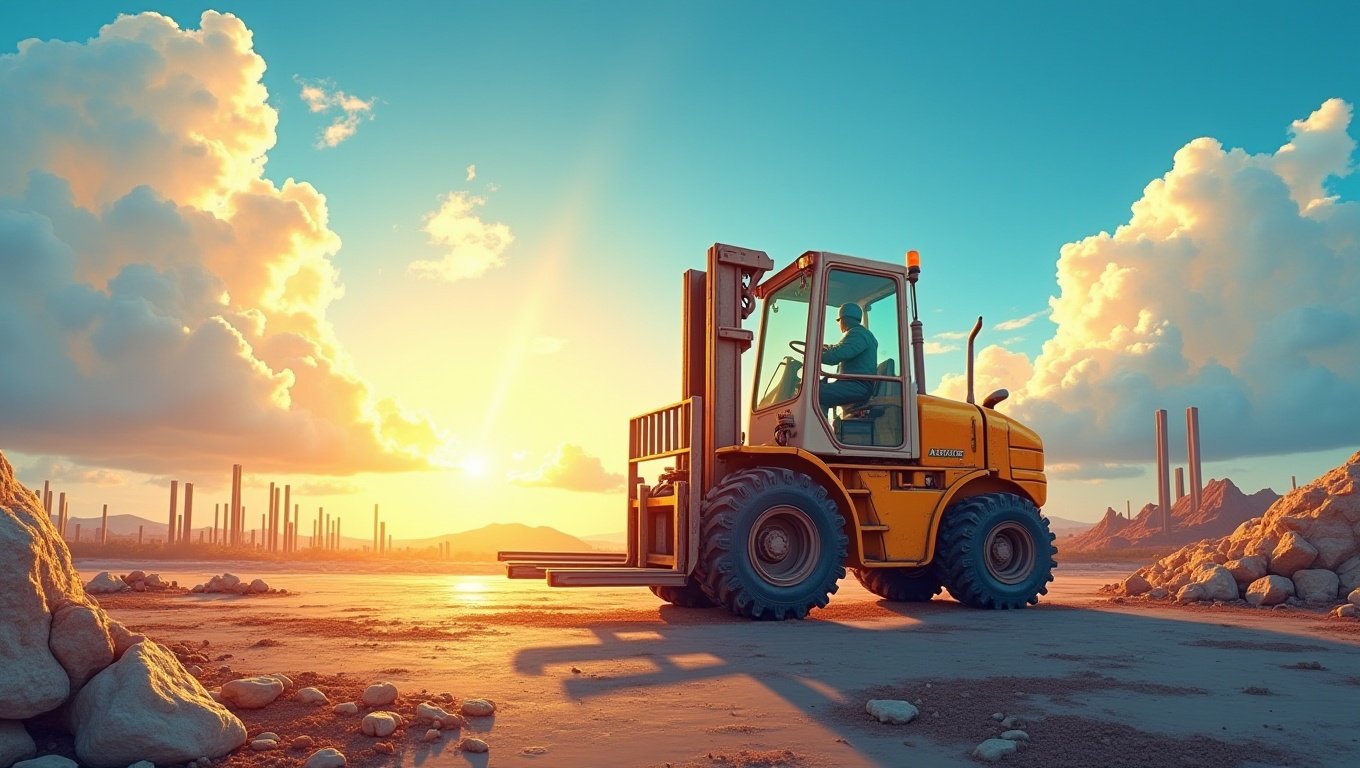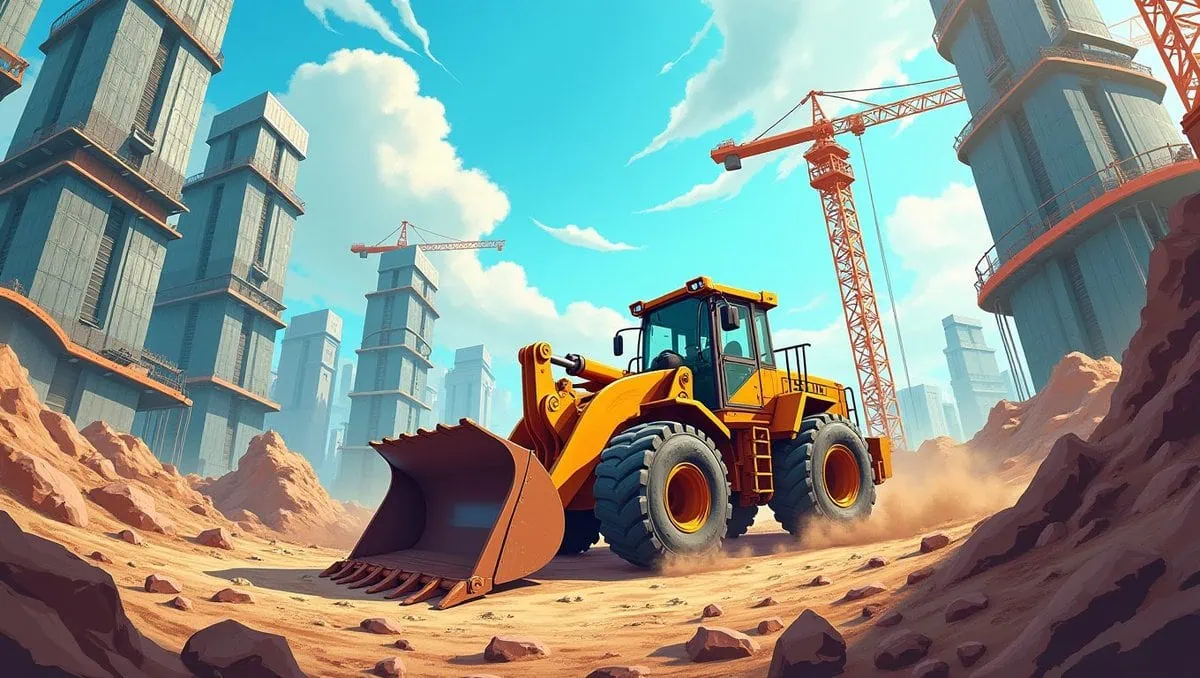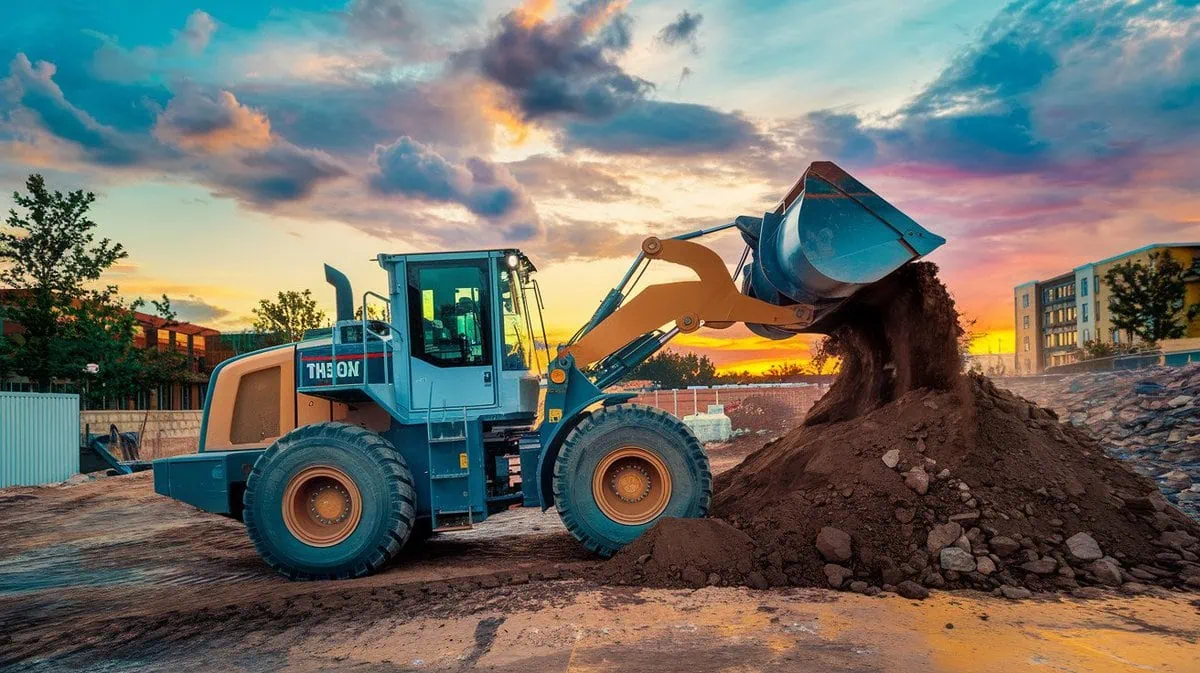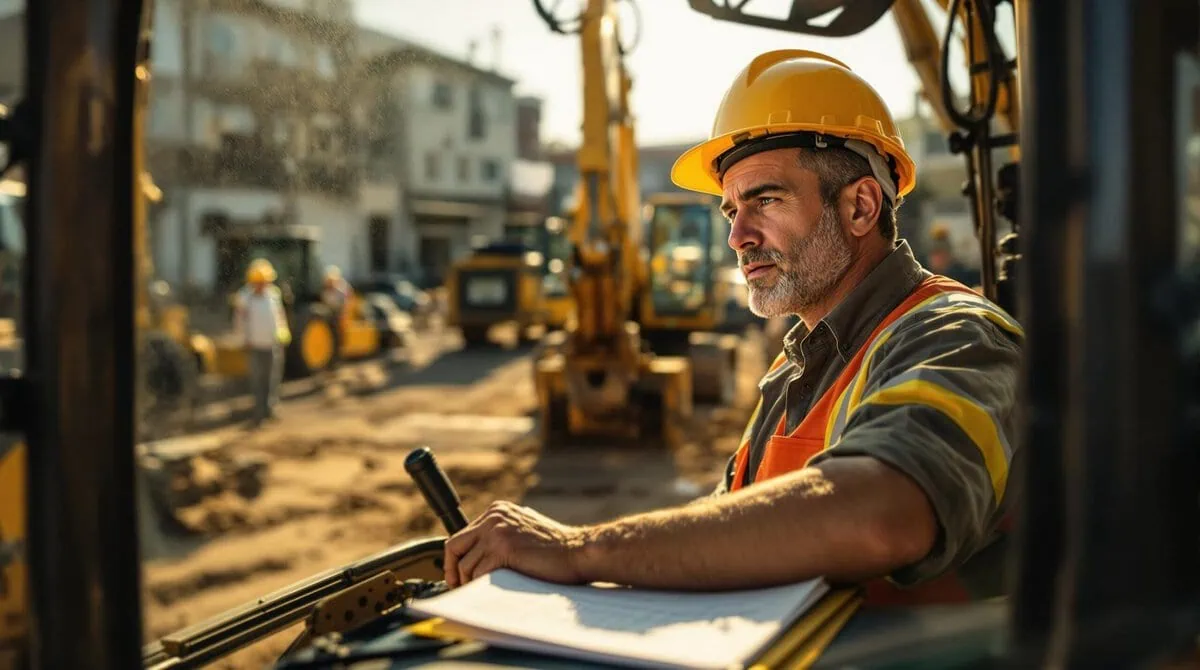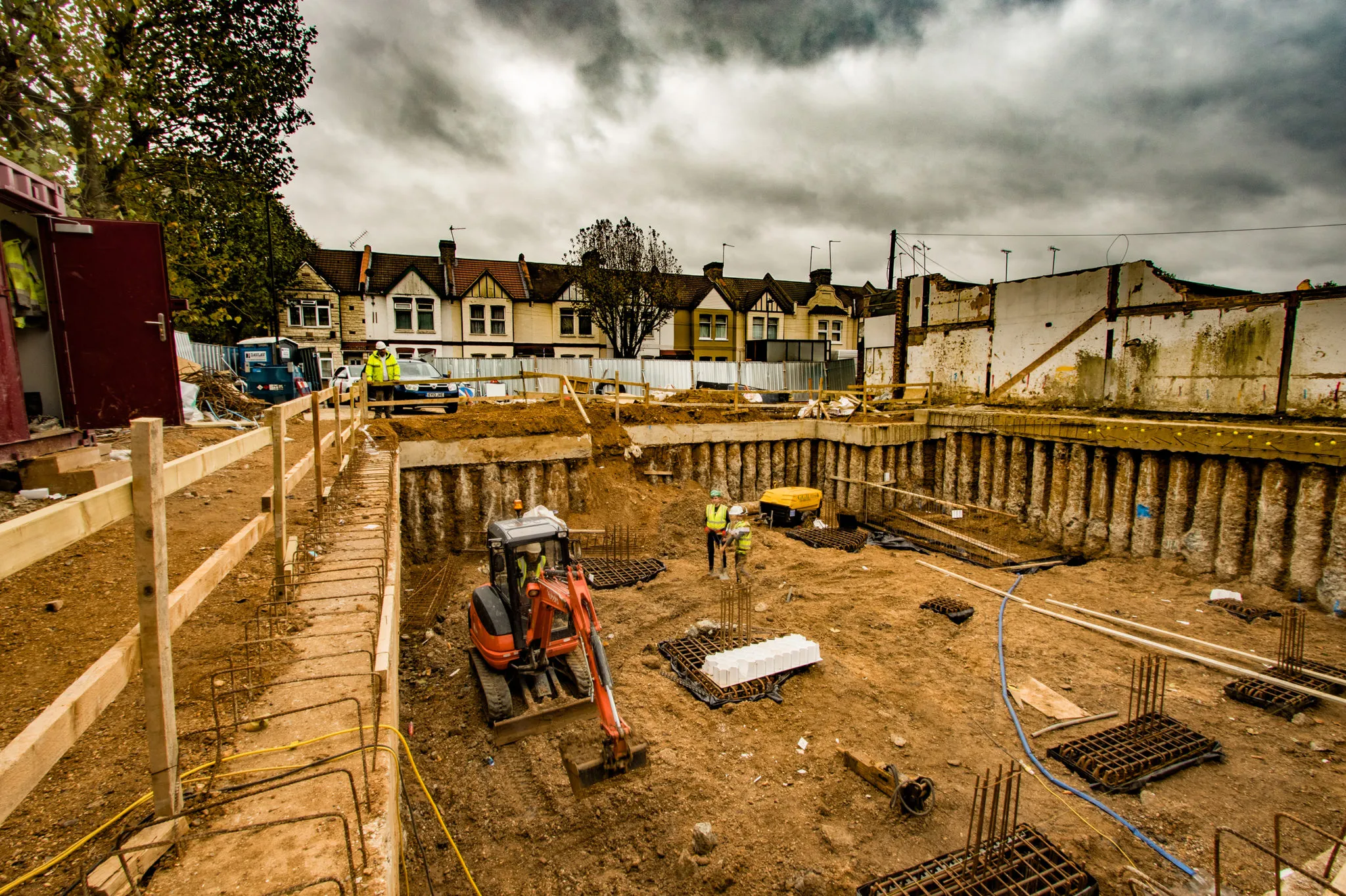When it comes to strength and lifting capacity, there are some jobs that even the strongest forklift trucks can’t handle. In those cases, the answer may be in the realm of the world’s biggest forklift. In this article, we’re looking at the biggest forklifts. We’ll explore the world’s largest forklifts, what they’re used for, stratospheric specs, and the industries that rely on them to lift the heavy stuff that crushes standard forklifts.
El biggest forkliftin the world is designed for extreme loads in industries like shipbuilding, mining, and construction. These machines can lift heavy cargo like never before, pushing the limits of forklift technology. Learn how these giants work and which companies make them.
What makes these big forklifts so special? What are the big differentiators when compared to the roaming herd of midsized forklifts that occupy the majority of the lift market? Let’s explore it.
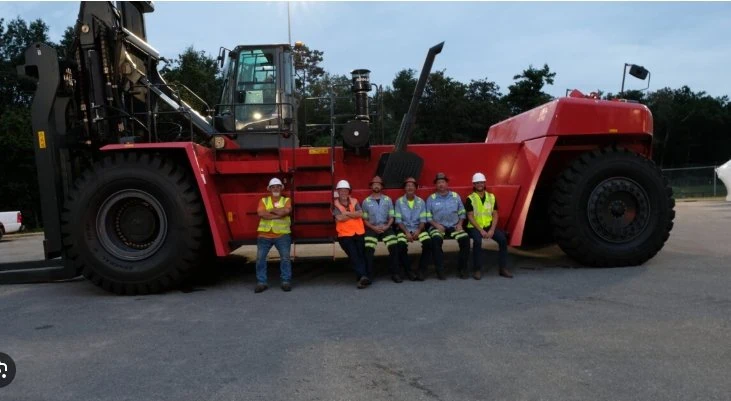
1,What is the Biggest Forklift in the World?
When the term “world’s biggest forklifts” is used, it’s not all about size; it’s about the functionality, strength, and ability to operate in some of the harshest environments. The largest forklifts are designed for specific industries that demand lifting very, very heavy loads.
El biggest forkliftin the world, like the Liebherr LTM 11200-9.1, offers lifting capacities far beyond that of typical forklifts. This machine can lift up to 1,200 tons, making it essential for tasks such as heavy-duty lifting in shipyards and construction sites.
One manufacturer, Amante, is a dominant player in the forklift industry. They offer things like the LTM 11200-9.1, which is one of the largest mobile cranes on the planet. These machines have highly evolved hydraulic systems. They have special booms and the latest in lifting technology. Everything about them spells BIG and the ability to lift what you want, when you want it, and where you want it, without breaking a sweat. Because they’re so big, they need specially designed tools to pick up stuff in specific ways.
Table: Comparison of the Biggest Forklifts
| Forklift Model | Lifting Capacity (Tons) | Height (Meters) | Primary Usage |
| Liebherr LTM 11200-9.1 | 1,200 | 80 | Shipbuilding, Construction |
| Mammoet TS 2000 | 1,000 | 100 | Heavy Industry, Offshore |
| Toyota 8FGCU30 | 3 | 6 | Warehouse, Small Construction |
| Kalmar DCE160-12 | 16 | 4 | Port operations, Cargo |
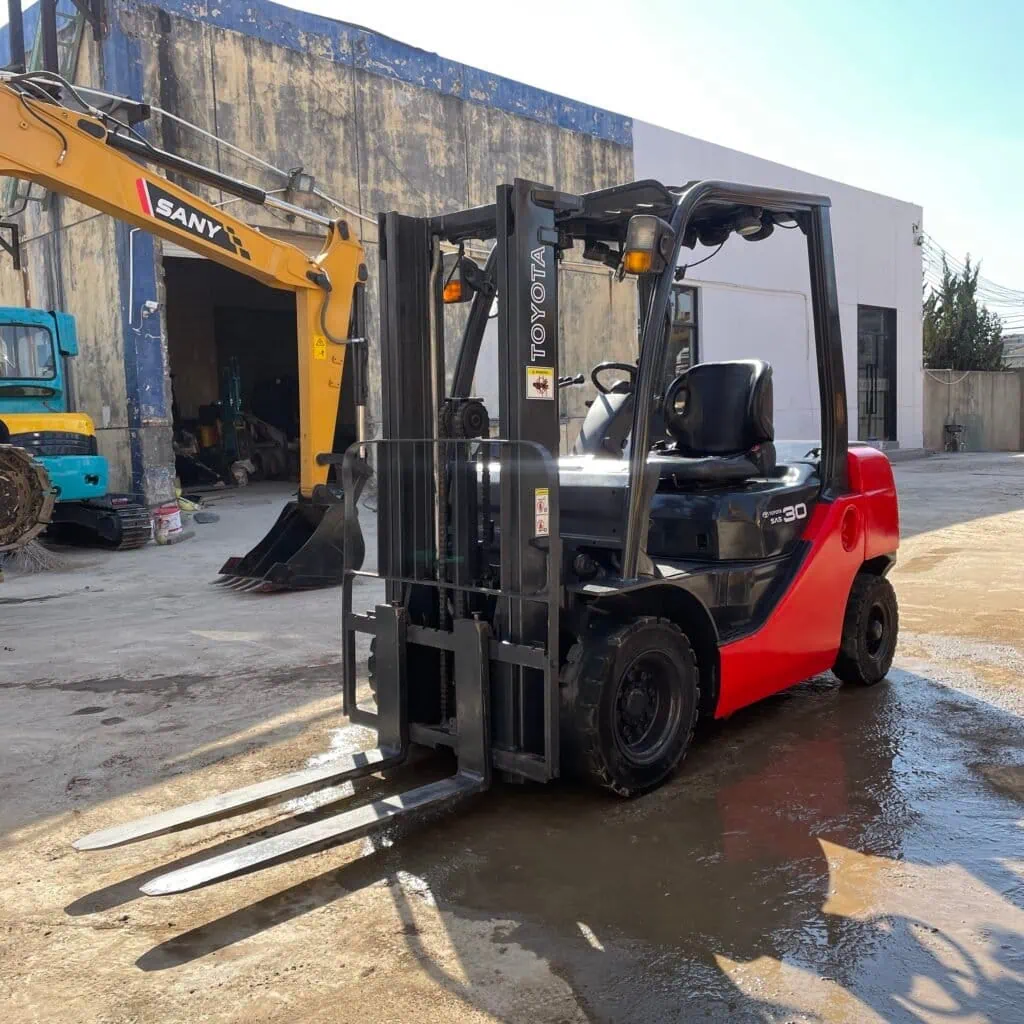
2,What is the Maximum Size of a Forklift?
When we talk about how big a forklift can be, we’re not just talking about how tall it can lift, how long it can reach, or how heavy something it can pick up. It’s not just about how much it can pick up. It’s about how big a circle it can make with the stuff you want to pick up sitting on the floor.
El largest forklifts can be as long as 15 meters (about 50 feet) and can weigh over 100 tons. Their lifting capacity can reach up to 1,200 tons, such as the Liebherr LTM 11200-9.1, which is capable of handling extreme cargo sizes in industries such as mining and shipbuilding.
There’s not always a set “maximum” size for a forklift. The maximum size of forklifts is dependent on the model features and what it’s supposed to do. There are industrial giants like Mammoet that make their own massive forklifts for large industrial projects like lifting off-shore drilling rigs, machines for large factories, or other heavy stuff. The dimensions and features of this forklift make it able to pick up anything you want to move and set in place.
Table: Maximum Dimensions of Various Large Forklifts
| Forklift Model | Length (Meters) | Width (Meters) | Weight (Tons) | Lifting Capacity (Tons) |
| Liebherr LTM 11200-9.1 | 15 | 3.5 | 100 | 1,200 |
| Mammoet TS 2000 | 18 | 4.0 | 120 | 1,000 |
| Toyota 8FGCU30 | 3.5 | 1.5 | 4 | 3 |
| Kalmar DCE160-12 | 5 | 2.5 | 60 | 16 |
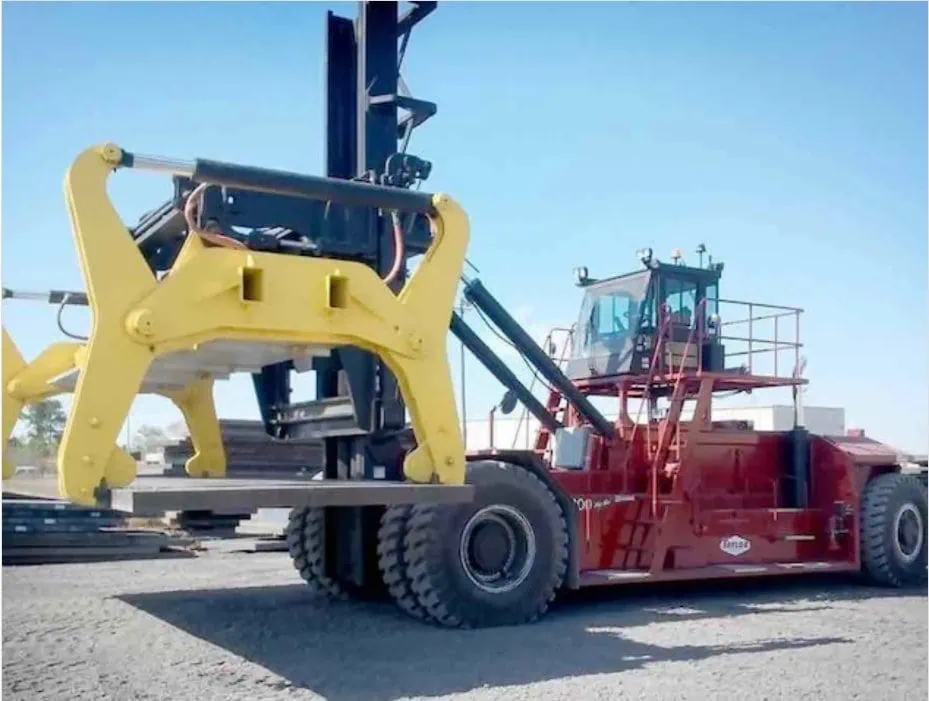
3,What is the Highest a Forklift Can Lift?
How high you can lift depends on the design engineering of the forklifts and what you’re trying to achieve. But, with the largest forklifts, height is not their primary design focus; it’s weight capacity. But, they can lift much higher than almost any other forklift you’ve ever seen.
Some of the biggest forkliftsin the world can lift up to 80 meters, or even more. These giant forklifts are typically used in shipyards, construction projects, and other specialized applications where extreme heights are required to position large structures.
El Liebherr LTM 11200-9.1, for example, has an 80-meter lift height. (That’s about 262 feet high!) This forklift—though huge in size—can lift stuff 200 feet in the air. That’s taller than most of the forklifts you’d ever see in use. So, if you’re building a ship on the river or making an oil rig out in the Gulf of Mexico, this baby can pick up and put in place whatever you need where you need it.
Table: Lifting Heights of Various Forklifts
| Forklift Model | Maximum Lifting Height (Meters) | Primary Use |
| Liebherr LTM 11200-9.1 | 80 | Shipbuilding, Offshore |
| Mammoet TS 2000 | 100 | Heavy Industry, Construction |
| Toyota 8FGCU30 | 6 | Warehouse, Small Projects |
| Kalmar DCE160-12 | 6 | Port operations |
4,What Are the Safety Considerations When Operating the World’s Biggest Forklift?
Using the world’s biggest forklift requires safety measures in place to protect the operator and other people around the machine. These machines are heavy, large, and dangerous.
Safety is paramount when operating such huge forklifts. Operators must undergo extensive training, and regular maintenance is essential to prevent accidents. Additionally, the environment in which these forklifts operate must be carefully assessed for any hazards.
Big giant forklifts have safety measures in place. They have warning systems, emergency stopping systems, load monitoring systems, and built-in safety features. You have to be trained to operate one of these machines. Many companies have certification programs for operators. Finally, the ground under these mega-lifting machines sometimes has to be just as heavy and stable as it is, or they would fall over and have an accident.
Table: Safety Features in the Biggest Forklifts
| Safety Feature | Descripción | Forklift Models with Feature |
| Load Monitoring System | Ensures proper weight handling and load balance | Liebherr LTM 11200-9.1, Mammoet TS 2000 |
| Emergency Brakes | Immediate halt in case of malfunction | Kalmar DCE160-12, Toyota 8FGCU30 |
| Ground Support/Stabilizers | Reinforces ground stability during lifting | Liebherr LTM 11200-9.1 |
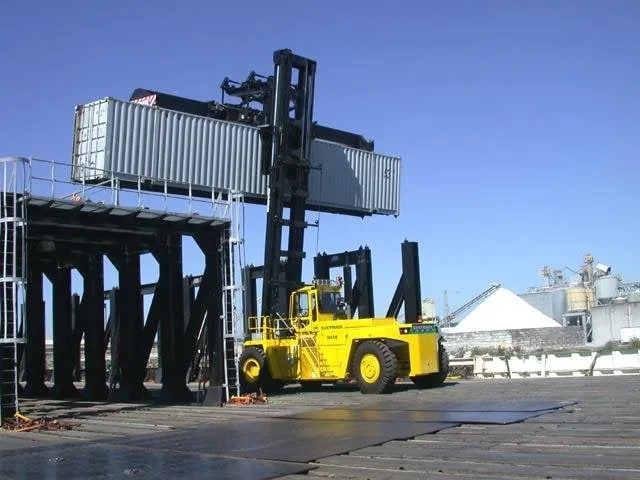
5,What is the Difference Between a 10-Ton Forklift and the World’s Biggest Forklift?
A regular 10-ton forklift is designed for general warehouse usage. The world’s biggest forklift is designed to lift thousands of tons in specialized trades. The difference is huge both in size and functionality.
The key difference between a 10-ton forklift and the biggest forkliftis in their lifting capacities and intended applications. A 10-ton forklift is ideal for smaller, more manageable loads, while the world’s biggest forkliftis used for loads that weigh up to 1,200 tons.
These 10-ton forklifts are made for pallet running, stacking, material handling in and out of a warehouse, that sort of thing. But the world’s biggest forklifts are used to build skyscrapers or build ships, to take something on or off of a barge, or to move equipment to or from a power plant. Because they can pick up something that a smaller forklift can’t even think about picking up.
Table: Comparison Between 10-Ton Forklift and the Biggest Forklift
| Forklift Model | Lifting Capacity (Tons) | Height (Meters) | Weight (Tons) | Primary Usage |
| Standard 10-Ton Forklift | 10 | 4 | 10 | Warehouse, Small Loads |
| Liebherr LTM 11200-9.1 | 1,200 | 80 | 100 | Shipbuilding, Heavy Lifting |
| Mammoet TS 2000 | 1,000 | 100 | 120 | Offshore, Industrial |
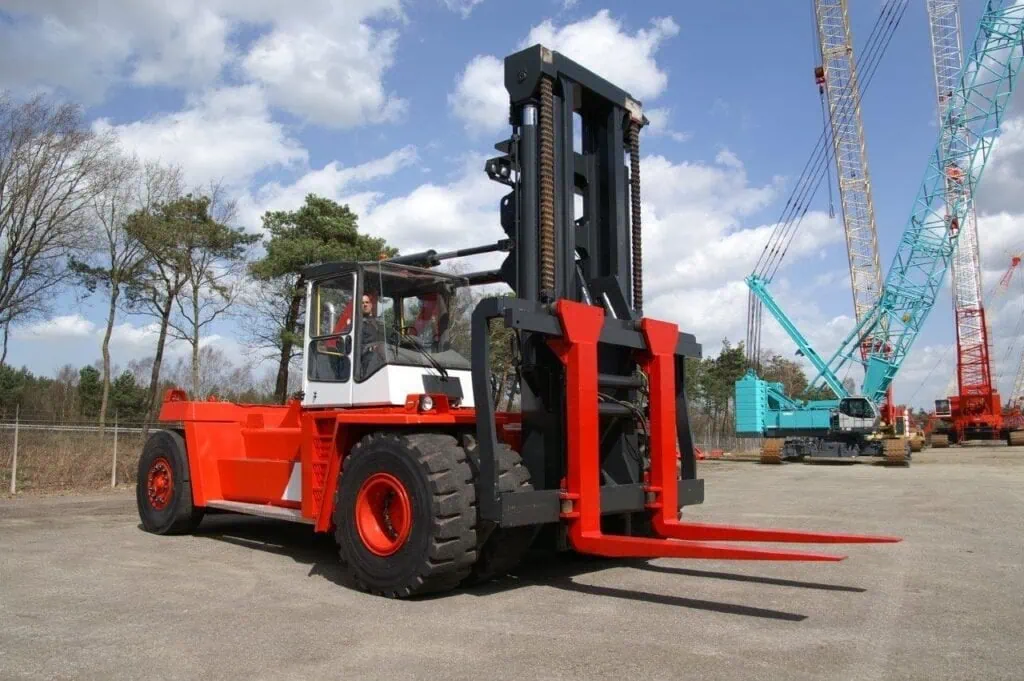
6,What Brands Make the World’s Biggest Forklifts?
Some worldwide brands produce the world’s largest forklifts. They are known for their engineering power and the ability to make a forklift that can lift a lot of really heavy stuff.
Brands like Amante, Mammoet, y Kalmarare known for designing and manufacturing some of the largest forklifts in the world. These machines are tailored for the most demanding industrial tasks.
An example of a company that specializes in these huge forklifts is Liebherr out of Germany. They built the LTM 11200-9.1, which can lift 1,200 tons. It created this forklift to build ships or work offshore. Mammoet’s forklifts are also vast. They built the TS 2000 for heavy industrial lifting, among other things. The third brand producing world’s biggest forklifts is Kalmar, part of Cargotec, building big forklifts for port and container handling.
Table: Brands and Their Biggest Forklifts
| Brand | Forklift Model | Lifting Capacity (Tons) | Primary Use |
| Amante | LTM 11200-9.1 | 1,200 | Shipbuilding, Offshore |
| Mammoet | TS 2000 | 1,000 | Heavy Industrial |
| Kalmar | DCE160-12 | 16 | Port Operations |
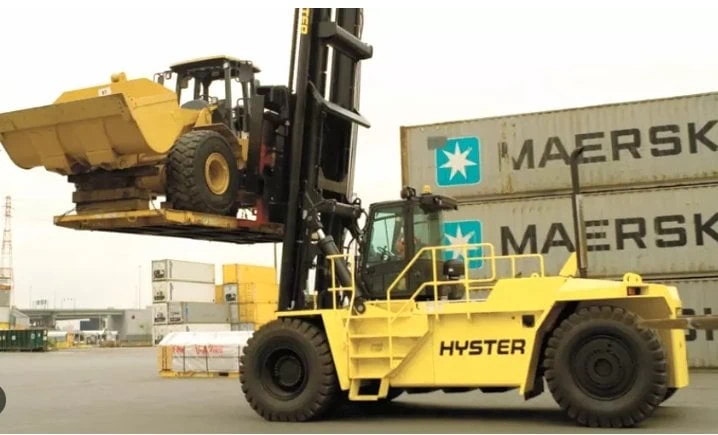
7,Where Are the World’s Biggest Forklifts Used?
The world’s biggest forklift is not something somebody operates in a warehouse. It’s built for handling really heavy items in special applications and terrible environments.
These forklifts are typically found in industries like shipbuilding, mining, and large-scale manufacturing. They play an essential role in transporting oversized components, which is crucial for the smooth operation of these industries.
Mostly that’s to move big chunks of a ship around in a shipyard. It’s found in construction where they have to move gigantic weirdo stuff around too. They’re also in mining, where the earth is trying to bring up to the top of the earth large rocks and dump trucks that have fallen into the earth. You wouldn’t use a forklift like that underground. Would you use a Toyota forklift underground? Probably. You wouldn’t send that down there either. These big, huge forklifts are used in those unique situations where they’re moving these large loads.
Table: Industries Using the World’s Biggest Forklifts
| Industry | Common Applications | Forklift Model Example |
| Shipbuilding | Moving ship sections, heavy parts | Liebherr LHM 800 |
| Minería | Transporting mining equipment | Caterpillar H1650 |
| Heavy Manufacturing | Lifting large industrial machinery | Mammoet Mega Lift |
| Construcción | Handling oversized construction materials | Liebherr LHM 800, Mammoet Mega Lift |
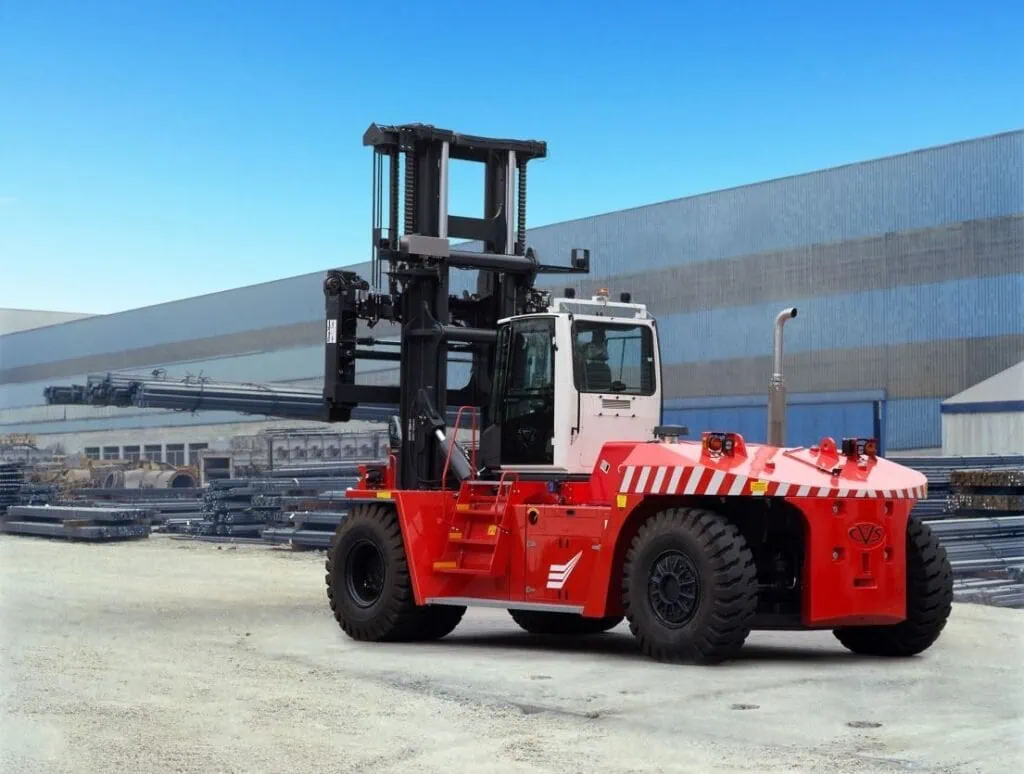
8,What are the Unique Features of the World’s Biggest Forklift?
El biggest forklift isn’t just big. They are specially designed for carrying heavy loads that a standard forklift can’t lift. They have extra-wide bases. They come with higher-pressure hydraulics and more tires. If you have to lift 200 tons, then you can’t just have a forklift lift it. It needs reinforced hydraulics, custom frames, and the tires. Because when you want to lift 200 tons, you have to have enough tire so you can carry 200 tons around.
El biggest forkliftcomes with unique features, including powerful hydraulic systems, reinforced lifting arms, and multi-axle designs. These features ensure stability when lifting extremely heavy objects, allowing these forklifts to perform tasks in the harshest environments.
However, the cool part is its hydraulic lifting system. When you have to lift an extra-weirdo amount of weight, then you need a reinforced hydraulic system. This way you can power the hydraulics with motors large enough to lift three tons. Additionally, you could not or would not lift two tons or 200 tons, for that matter, with mathematically sufficient tires on the car. You would need reinforced hydraulic with motors big enough to lift three tons. Also, the haunted car has multiple axles multiple wheels across the back—whatever it needs to distribute the load to keep the machine in balance.
It’s a little bit different than a standard Toyota forklift with a pair of wheels in the front and the pair in the back. The world’s largest forklift is a significant machine that requires exceptional safety measures and precision engineering to operate.
Table: Key Features of the World’s Biggest Forklift
| Característica | Descripción |
| Sistema hidráulico | Advanced systems for handling massive loads |
| Lifting Height | Up to 60 feet or more |
| Stability | Multiple axles for stability under extreme loads |
| Custom Design | Tailored to specific industrial needs |
| Operational Environment | Large, open spaces such as shipyards or factories |
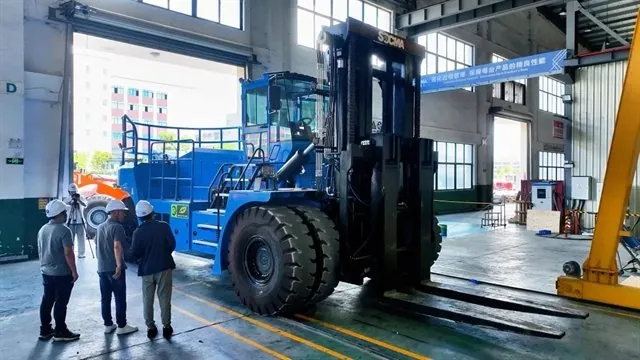
9,How Much Weight Can the World’s Biggest Forklift Lift?
El biggest forklift in the world is designed to do more than lift heavy loads. It is engineered to handle severe offshore work, in factories, or moving heavy equipment. So how much weight can the biggest forklift in the world carry? Let’s look at a couple examples.
El world’s biggest forkliftcan lift up to 100 tons or more, depending on the model. These machines are built for industries that need to move exceptionally heavy materials or components, such as large ship parts or heavy mining equipment.
Some of the largest forklifts in the world can lift things that weigh a few hundred tons compared to three tons, their maximum capacity. For example, the world’s largest forklifts used in shipyards can lift pieces of a ship that weigh up to 1,000 tons. These machines have multiple wheels on them to distribute the weight so that it isn’t a disaster when it is driven around. They’re built out of reinforced beams so they can carry the loads. Typically, you don’t hear about a forklift having these features. They’re reliable for moving three tons around a warehouse, not for carrying a ship around a shipyard.
Weight Capacities of Some of the Biggest Forklifts
| Forklift Model | Maximum Weight Capacity | Typical Application |
| Liebherr LHM 800 | 308 tons | Shipbuilding, heavy machinery |
| Mammoet Mega Lift | 500 tons | Large industrial equipment |
| Caterpillar H1650 | 130 tons | Mining, construction |
| Toyota 10-Ton Forklift | 10 tons | Warehouse, general lifting |
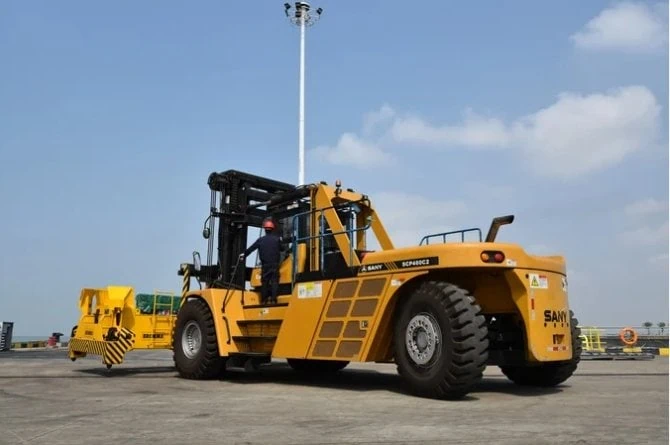
10,What is the Role of Hydraulic Systems in the World’s Biggest Forklift?
El hydraulic system is everything when it comes to the haunted house on wheels lifting or lowering anything. The hydraulic system would function the exact same way. I want to say it would also perform slightly heavier lifting when it went to bed because there are a reinforcer and hydraulic system supporting it. The primary reason for lifting the engine was to get the weight off that road. Unlike a two-wheel pair in the front and a two-wheel pair in the back like every Toyota forklift in a warehouse. The world’s largest forklift is a highly specialized machine, which requires lots and lots of safety measures and lots and lots of precision engineering to run.
In the largest forklifts, hydraulic systems are the backbone of the lifting mechanism. These systems use high-pressure hydraulic fluid to lift massive loads, providing the necessary force and stability to handle industrial-grade tasks.
The hydraulic system is there to pick objects up and put them down and to do it controlled. Work harder on his own body to pick up a car to get you enough room to work. The biggest one would have four or five axles and ten wheels in the back. Use all the tricks you can to keep the load from wiping $ out and kill you and your load. Not two-wheel pairs in the front, and not two-wheel pairs in the back, as in every Toyota forklift in the world. These are highly specialized machines that require a lot of safety and a lot of precision engineering to operate.
Table: Hydraulic System Specifications in the World’s Biggest Forklifts
| Forklift Model | Hydraulic Capacity (Tons) | Hydraulic Cylinder Size | Main Function |
| Liebherr LTM 11200-9.1 | 1,200 | 7.5 | Lifting heavy cargo, cranes |
| Mammoet TS 2000 | 1,000 | 6 | Offshore lifting, industrial tasks |
| Kalmar DCE160-12 | 16 | 0.5 | Port operations, heavy lifting |
| Toyota 8FGCU30 | 3 | 0.1 | Warehouse, material handling |
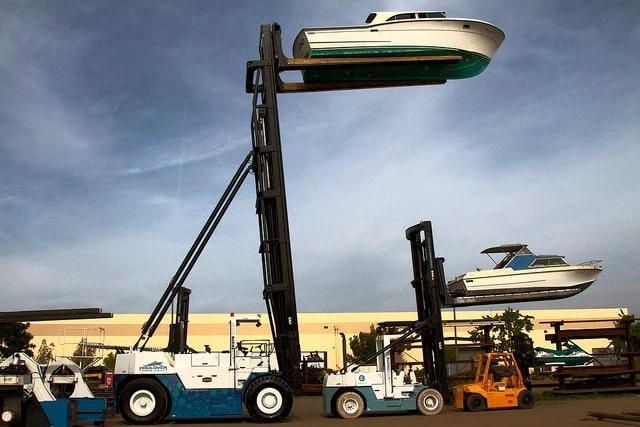
Resumen
The world’s biggest forklifts are feats of engineering for specific industries that need to lift a massive amount of weight. These are not the standard ten-ton forklifts that you see in a warehouse anywhere in the U.S. They serve specific functions on ships, in construction, and in mines. The Liebherr LTM 11200-9.1 can lift 1,200 tons and reach 80 meters in the air. It’s used to pick up large pieces of a ship they put together in a shipyard. The Mammoet TS 2000 and the Liebherr both work in the heavy industrial lifting and construction industry sectors. Kalmar makes huge forklifts that work in the port and container world, unloading ships, and the like.
Safety features on such machines are more advanced and typically require special grounding, training, and safety protocols to operate them properly. They’re equipped with all kinds of warning systems, emergency brakes, and load-monitoring systems so you can tell right away if anything is wrong. These forklifts are for use in the big, wide open spaces of a shipyard or a massive construction project—not in some little warehouse or a construction project like Toyota forklifts. In short, the biggest forklifts are meant for lifting the largest, heaviest, most unwieldy items where weight, reach, and lifting power count.

